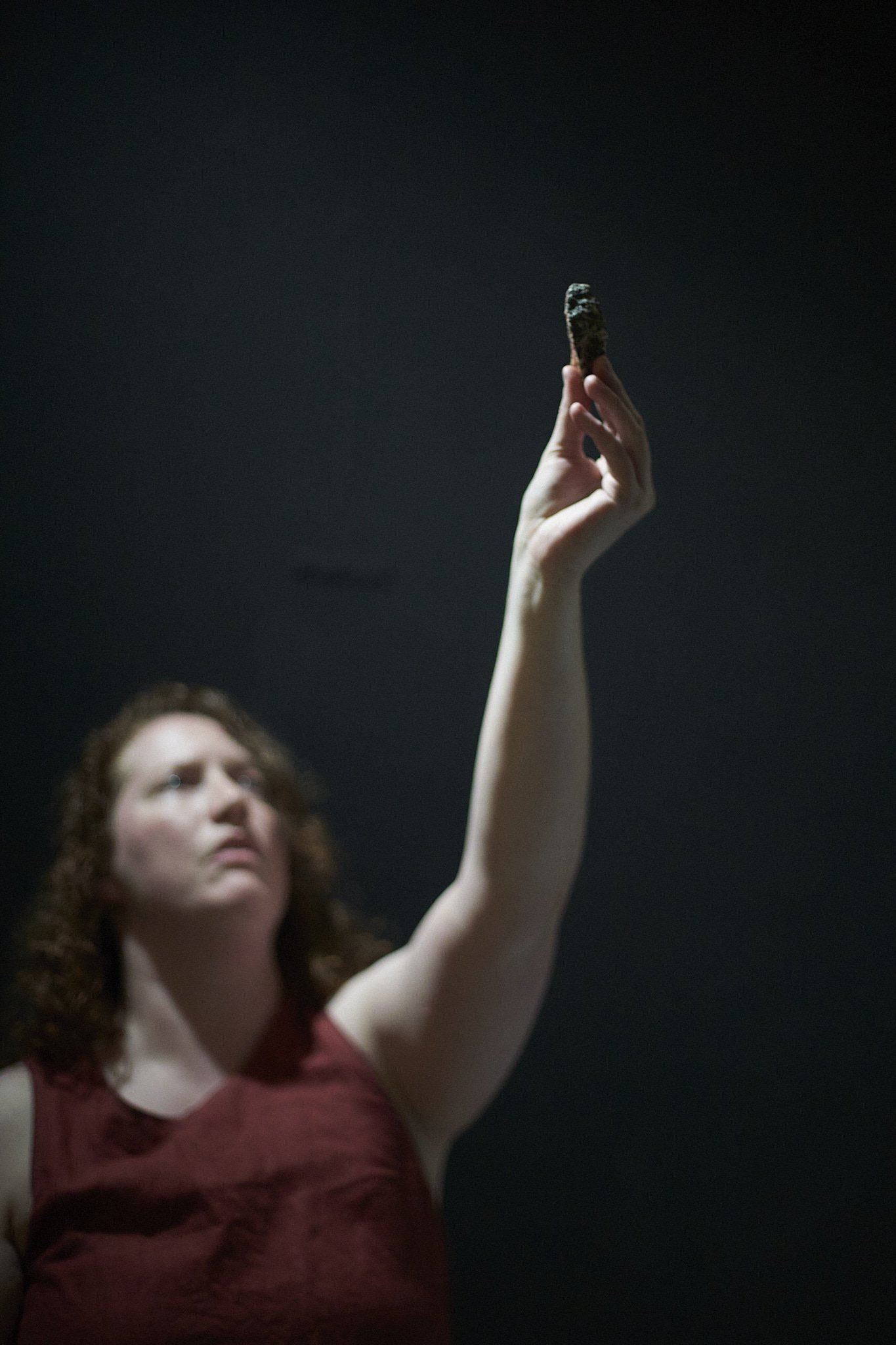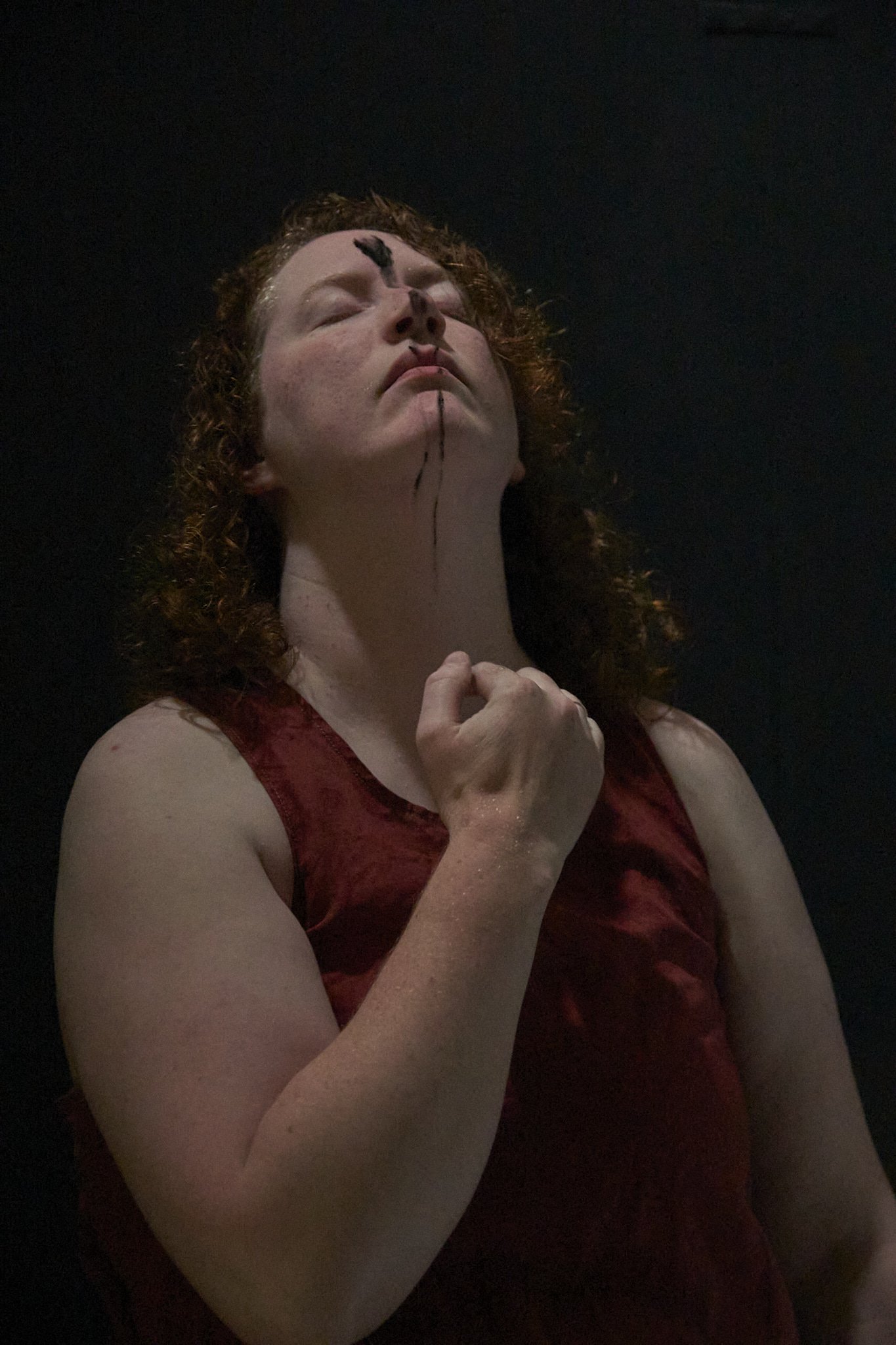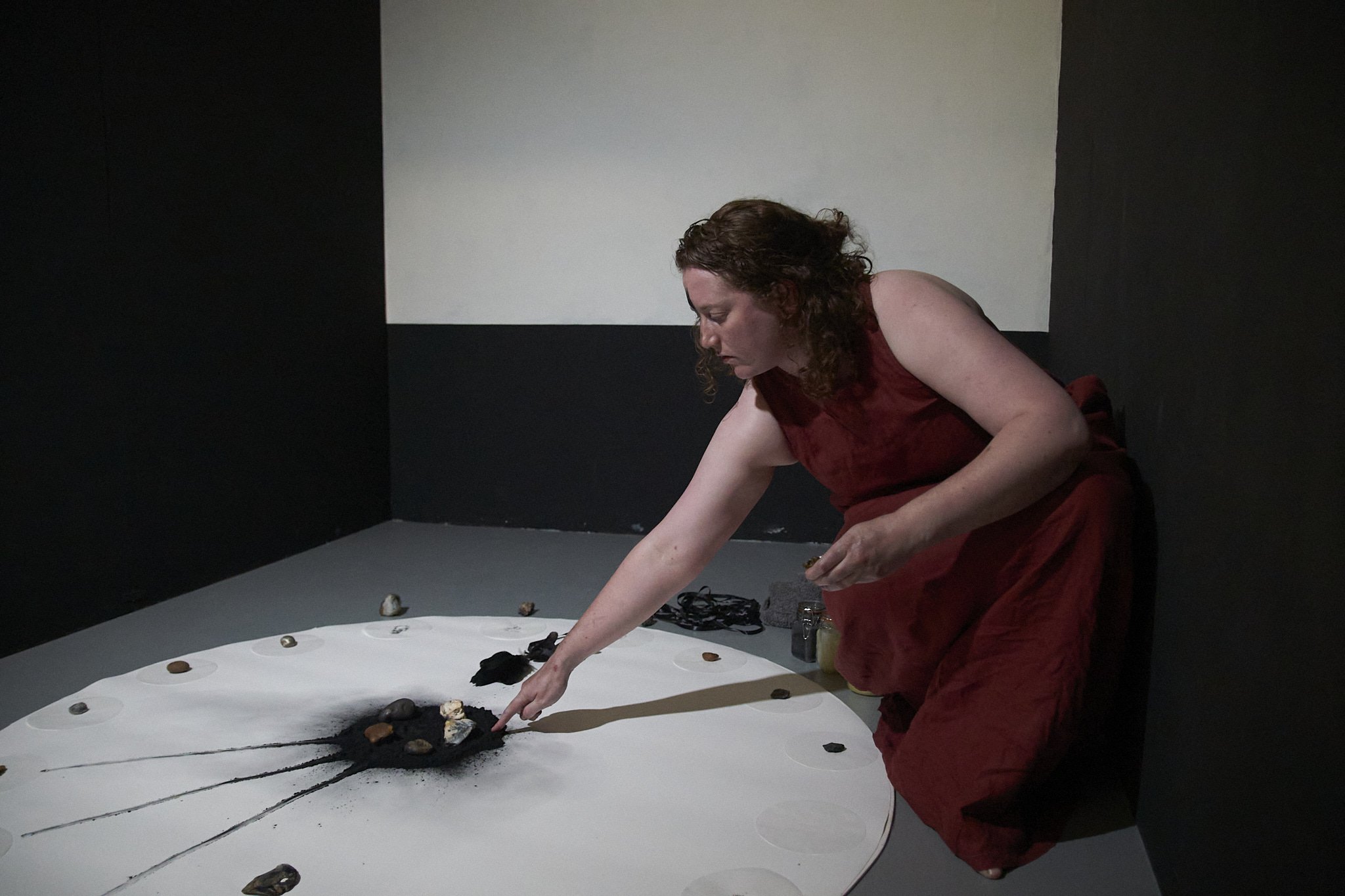Elizabeth Tomos (2024) Hiraeth: an ode to (be)longing. [Perform//Print]
The photograph was taken by Joe Brown at the University of Northampton MA Fine Art Alumni Show in July 2024.
The performance directly explores my nomadic life and fragmented cultural heritage. I grew up with family stories of my Welsh lineage, which can be traced back as far back as there is written record, and of their migration, alongside much of the community, to Portsmouth (England) following the closure of Pembrokeshire Docks where my great-grandfather worked. Facing the loss of his livelihood, he had little choice but to agree to move and the family went with him. Clinging desperately and hopelessly to the vestiges of our Welsh culture and language, which slowly died, cut off from the land we had belonged to for centuries. I, on the other hand, was born elsewhere, a wanderer, a traveller, of no fixed abode, moving across two continents and multiple countries. I am 37 and I think I am up to 34 addresses in my lifetime, though I am losing count! I was born in an English town we were merely passing through on the way from South Africa to North America and was then raised across two continents, North America, and Europe. As a result, my relationship with the concept of home and belonging is fragmented. This work addresses my longing for a sense of home, a feeling of belonging, and connection to my ancestors and ancestral lands from which I was cut off.
The performance uses stones gathered from every place I have ever lived either by me or sent to me by loved ones left behind in those places. Throughout the performance, I select different stones from my collection, whichever feel like they want to perform that day and during the performance they are ritually massaged with oil and coated in a fine layer of a mixture of graphite, charcoal, and coal dust, and are then used as printmaking tools. During which I am meditating on journeying, on place, on land, home, and belonging. In more recent versions I have included singing to the stones various snippets of traditional folk music from the British Isles.
The work has also been based on an increasing desire to return to my ancestral heritage to navigate making artwork about the ecological crisis. Welsh mythology and literature, such as The Mabinogion a collection of medieval Welsh stories, reveal the deep and poignant understanding of the relationship between the land and the beings that inhabit it. Many characters are transformed into or fashioned from the land, or into animals and birds. The land has a vitalism and magic that permeates all experiences. Features of the landscape such as stones, pools, water, and caves become portals for transformation, acting as liminal spaces between the spiritual or magical realm and our world. Little to no distinction is made between the body and the ecology to which it belongs. Indeed, the Welsh word, Hiraeth, carries deep cultural significance through the Welsh framing of connectivity to the land, akin to blood running through veins, like roots of a tree connecting and enmeshing the land and all the beings that belong within it. Separation from the land results in a deep, deep longing. In times of great ecological crisis, these kinds of ancestral understandings of the land and its importance to the human spirit become especially poignant and critical. The work has become also a kind of lament for the land, for that deep sense of entanglement.
This work was first performed at Trans- States: The Art of Deception conference at the University of Northampton in September 2022. The resulting film has been screened for the Women Who Create conference in Cambridge in March 2023, Performance Studies International (PSi) conference in Joburg, South Africa in August 2023, and at the 4th World Psychogeography Conference in Canterbury (September 2024). The work has been developed and performed live as part of The Last Breath Society at Queen Mary’s in London and the MA Alumni show, Northampton at the University of Northampton.
The photographs below were taken by Stephen Godfrey at the inaugural performance of this work at the Trans- States conference at the University of Northampton in 2022.
Hiraeth: an ode to (be)longing.
What stories do stones tell? There is an African proverb that “Mountains don’t meet, people do”, but if stones do meet each other from different places, countries or even continents what passes between them? What languages do they speak? How do they converse with each other? Do they experience longing for home when they are separated from their homelands? What do the stones yearn for? What do they remember? What are their desires? What gifts does displacement from their homeland give them? Does being displaced from a sense of ‘home’ give the stones access to something they might never otherwise have had? Or more bleakly, in what ways are the stones suffering from this separation? What opportunities have been stolen? Can we, the stones and me, be in communion with one another in our displacement, and longing, and searching for home? In suffering are we perhaps kin? Can we be portals for one another to transform ourselves and each other, to take us to other places and other realms? And if so, what would any of that mean?
_____________________________________________
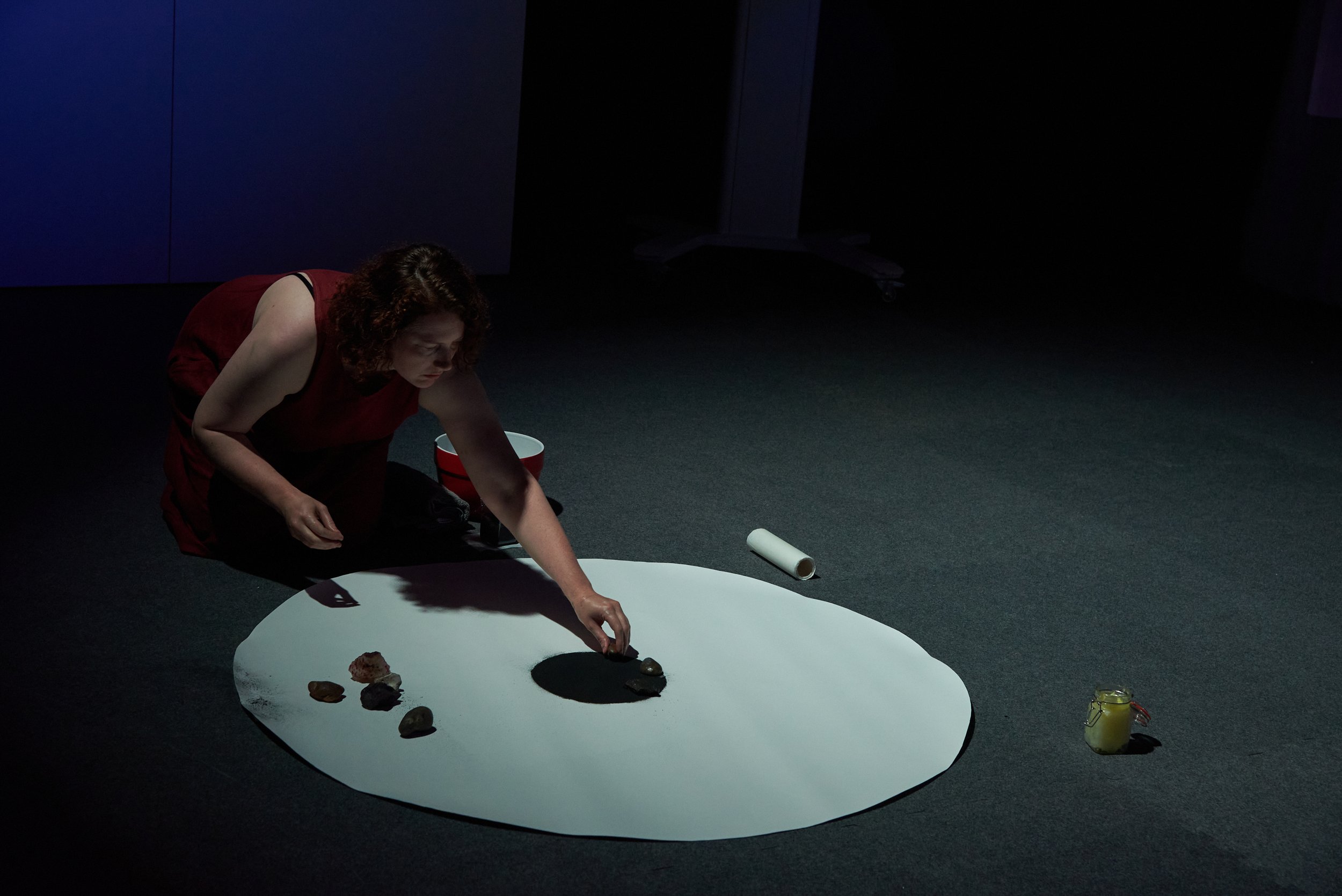
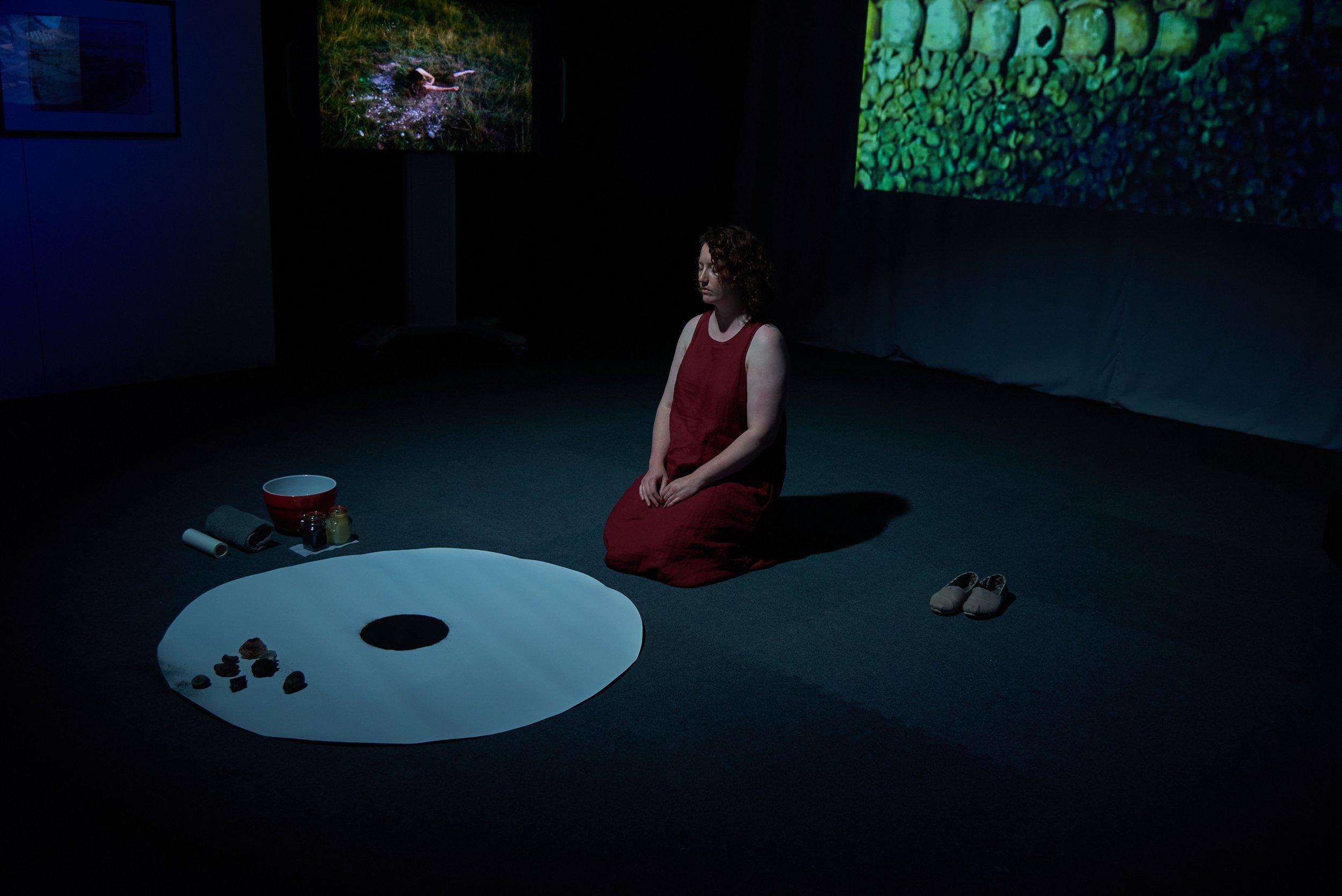


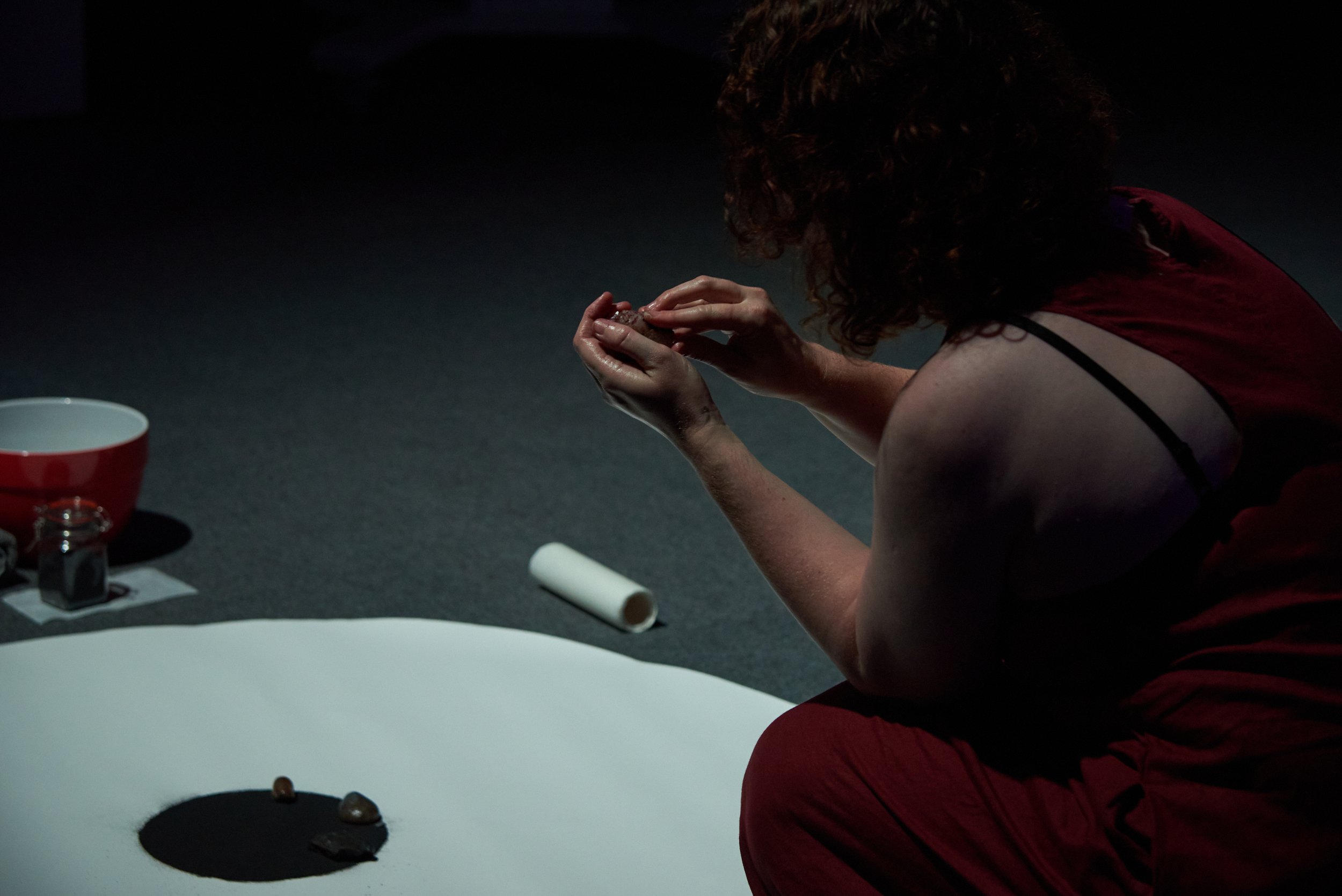
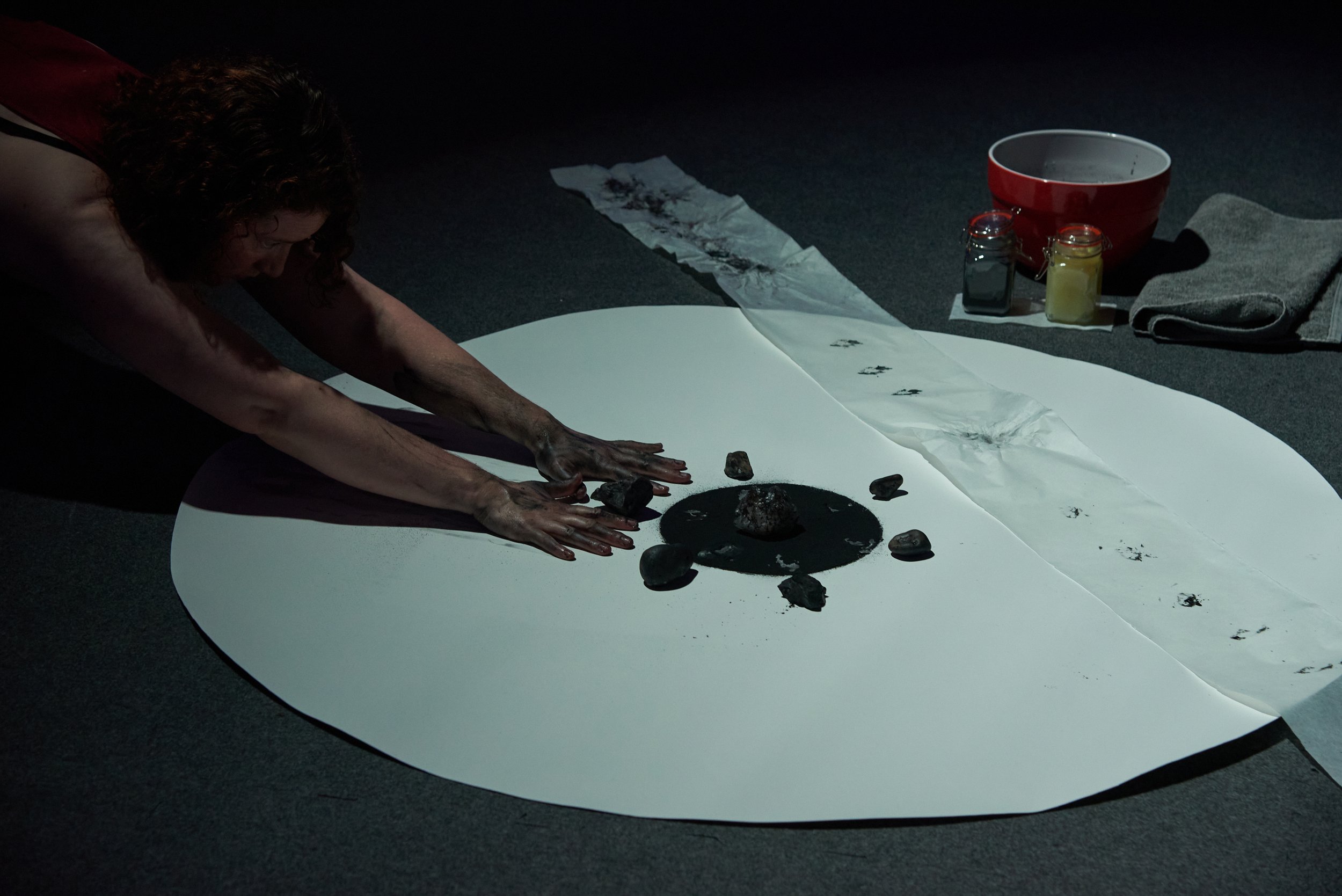
The photographs below were taken by Joe Brown at the University of Northampton, MA Fine Art Alumni show in July 2024. This was a reworking of the performance, which integrated elements from ‘Go Dig My Grave’ performed as part of The Last Breath Society.



